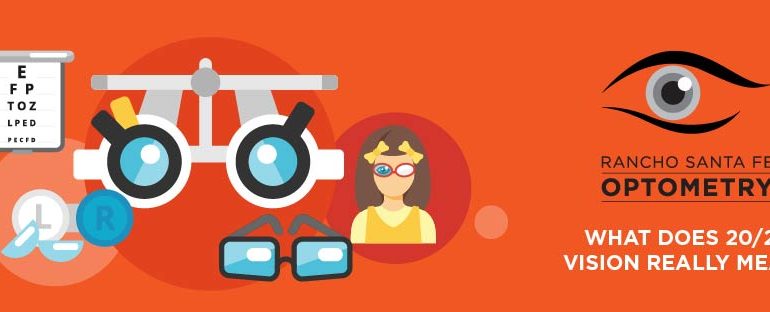To understand what 20/20 vision means, it’s important to understand another term. Visual Acuity. Visual Acuity is the sharpness or clarity of your vision. It’s measured by sitting in a static position, looking at static letters and numbers on a chart from a specific viewing distance. How well you can see the letters is then written in terms of numbers – 20/20 being “normal”.
Before I explain further, let me give you a little background. The eye chart that you commonly see in pediatric offices and schools was developed in 1862 by Dr. Herman Snellen, a Dutch ophthalmologist. He also developed the fractions that are beside each line of letters on his chart. Using his system, the top number of the Snellen fraction is the viewing distance between the patient and the eye chart. In the United States, this distance is typically 20 feet (or 6 meters). At this distance, the size of the letter on one of the smaller lines near the bottom (usually underlined in red) corresponds to “normal” visual acuity – meaning if you can read that line at 20 feet without any visual aids, then you have 20/20 vision.
It gets a little tricky when you change the number of the fraction on the bottom. For example: A person with 20/15 vision can see objects at 20 feet that a person with 20/20 vision can only see at 15 feet.
Said another way, 20/40 vision means that a person sees at 20 feet what a “normal” (20/20 sighted) person sees at 40 feet.
All you need to remember is that if the numbers on the bottom of the fraction are smaller, your vision is better than the norm. If the numbers are larger, then your vision is worse.
Love learning about your eyes? Then you will love our post about Blue Light.
At Rancho Santa Fe Optometry we offer comprehensive eye examinations for all ages. With a focus on children’s vision and vision therapy, our doctors test for visual acuity, visual efficiency skills and visual information processing starting in early infancy. The practice also provides diagnosis, treatment and management of diseases that affect the human eye and visual system, including dry eye syndrome, diabetic retinopathy, cataracts, macular degeneration and keratoconus.
